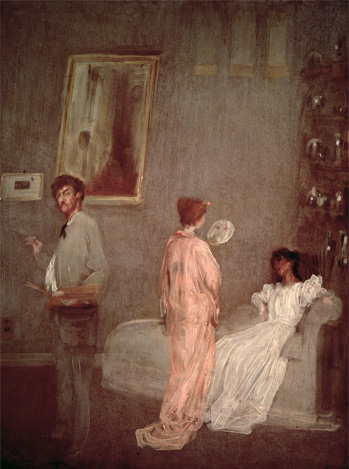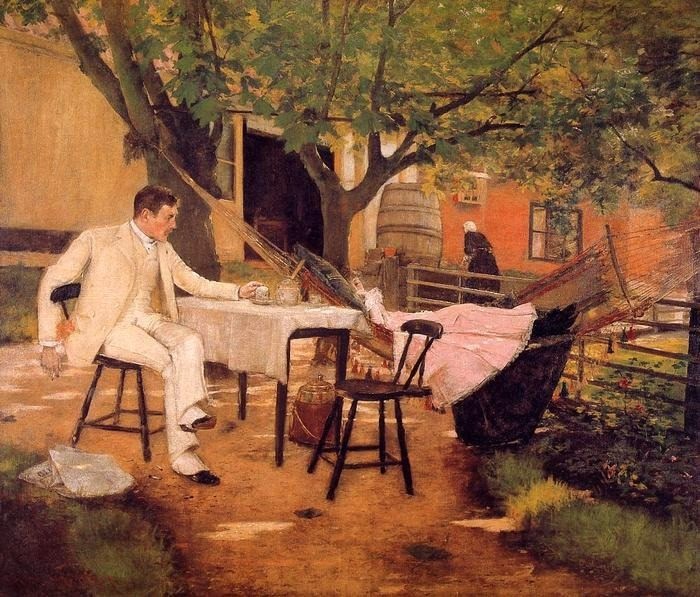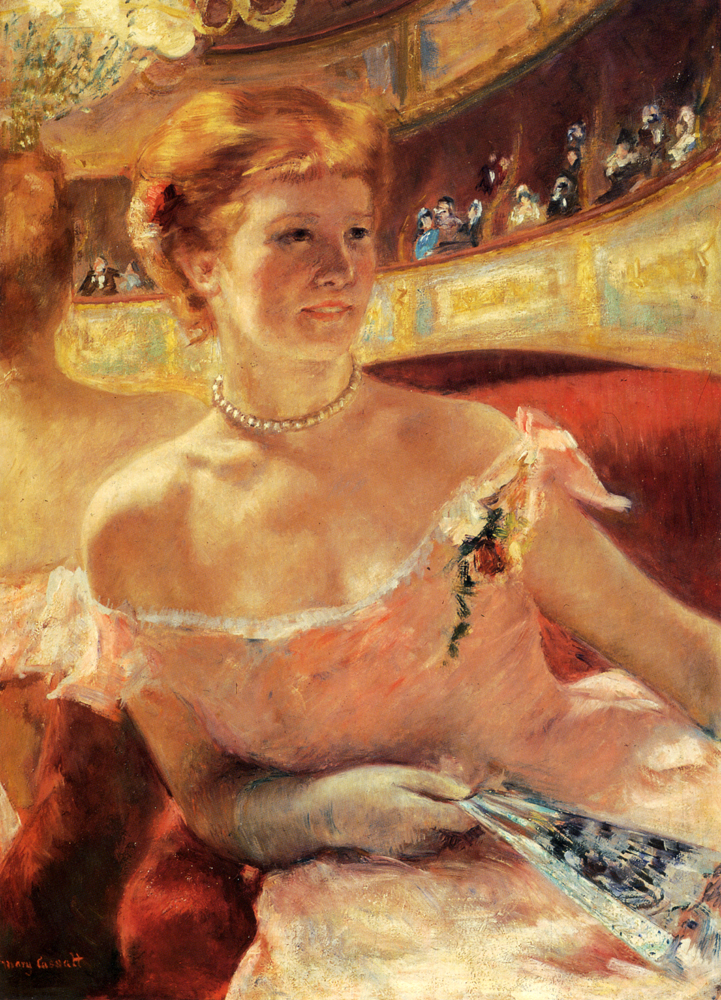The Henry James archetype of the American abroad: Generally painters, novelists or historians of the arts. Almost all of them idlers who live on unearned income and found in Switzerland an ideal tax haven; pensioners an elderly couples stretching their retirement funds in Spain and impecunious drifters propelled from one resort to another in search of the patronage and hospitality of sympathetic countrymen.
Van Wyck Brooks, in a history of the Americans who were magnetized by Italy, a sort of factual supplement to James’s fiction, wrote that before 1914, “…Italy was still the Arcadia that it was for Poussin…and perhaps especially for those who crossed the ocean from a land where Arcadia could only be a dream.” It was the time when a “classical” education produced a society in America that knew by heart, before catching sight of them, the beauties of antiquity and of the Renaissance and Brooks lamented the victory over nineteenth-century Yankee culture that had been achieved by then contemporary ridicule and ignorance.
The year 1914 certainly placed a full stop to any number of things, but it, and the four years that followed amounted to no more than a parenthesis in the history of American repatriation; more like a musical rest before a vivace movement. James had died in 1916 and we miss his perception of how soldiers could return to rural life once they had seen the capital of France.
But after WWI it was now France and not Italy that was claiming victims: the Steins, Gertrude and Leo, assiduously buying up the Fauves; Hemingway, whose moveable feast it was to become; Maria Jolas from Kentucky, Joyce’s great friend; Fitzgerald, off and on, Caresse Crosby, who brought out a magazine. Man Ray came to live and paint. There was an American hospital in Paris and an American newspaper. The city of light was the cultural capital of the world, and if it was not Arcadia, there were plenty of satyrs and nymphs about to help satisfy a need never overtly expressed by the emigres of earlier generations: it was permissive.

—
“Whistler in his studio” by Mr James McNeill Whistler, 1865-66. Photo The Art Institute of Chicago/The Bridgeman Art Library
Mr Whistler was a social entertainer, always sharply critical and ready with a witty comment or repost. He was once entertaining a group of London’s finer intellectuals and creative minds and after an especially witty comment, the poet Mr Oscar Wilde, who was a friend and one of the group, said, “I wish I had said that, James”. The reply came as quick as a flash: “You will, Oscar, you will.” It is little wonder that when it came to his paintings, Mr Whistler signed them with a butterfly – with a long stinger tail.—click image for source…
Experimentation was the fashion. Strong drink was taboo in the land of the free, and Main Street, according to Sinclair Lewis, was a dreary thoroughfare. Instead of the call of art history was the stronger magnet in a volume of nearly undecipherable pornography which, though called Ulysses, required a somewhat different kind of “classical” education for the fullest comprehension- its attraction all the more powerful because its importation was forbidden by the U.S. customs.
ADDENDUM:
(see link at end)…The heroes and heroines created by James incarnate, as Righelato notices, beauty, innocence, freedom, “vitality, frivolity and freshness” as they are open to experience and they seem to be more morally evolved. On the other hand, Europeans are characterized by “cynicism” , “corruption” and sophistication . The Americans in Europe are projected in contrast with the Old World’s way of life: “in the social setting with which they are identified, in the ways the speak, as well as in what they say, the various characters range themselves along an axis that runs from the natural to the cultivated, from the exuberant to the restrained” . In addition to this, Buitenhuis observes that another distinction is between “European surfaces” and “American depths”, or between “complexity” and “simplicity” . The American hero, beautiful, charming, simple, and to a certain extent ignorant, acts in a free, natural manner, a manner “not artificial and constrained” , as opposed to the self-consciousness of the ones he meets. Briefly, as Cushing Strout reveals, the features of The New World, spotted as qualities, are in opposition to those of The Old World, seen as inadequacies:
“On the one side stand Liberty, Happiness, Innocence, and Simplicity, pointing toward the Future, while separated by a pool of water […] stand Despotism, Misery, Corruption, and Sophistication, wrapped in the shrouds of the Past” .
Thus, Americans in Europe, as symbols of the New World, are characterized only by positive traits, while the ones they meet, symbols of the Old World, are characterized only by negative traits, meant to emphasize the huge contrast existing between these two cultures. It is this contrast that is responsible for Americans’ misunderstanding of the new space and their difficulties in living among the people from the Old Continent.
Henry James’s Daisy Miller, published in 1878, focuses exactly on these aspects, describing the opposition between two national cultures and between those pertaining to them.Read More:http://egophobia.ro/?p=5302







 COMMENTS
COMMENTS